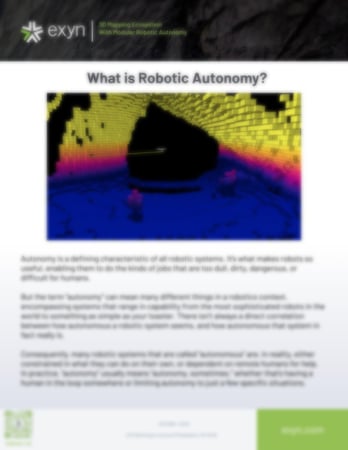
Autonomy is a defining characteristic of all robotic systems. It’s what makes robots so useful, enabling them to do the kinds of jobs that are too dull, dirty, dangerous, or difficult for humans.
But the term “autonomy” can mean many different things in a robotics context, encompassing systems that range in capability from the most sophisticated robots in the world to something as simple as your toaster.
In this whitepaper we will cover:
-
What technology is required to make a robot truly autonomous?
-
Real-world uses of autonomous systems in the field today
-
How surveyors can use this technology to better plan for data capture in the field
Understanding the Power of Autonomy
Download your copy of What is Robotic Autonomy?